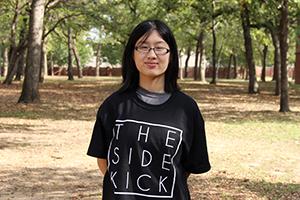Being triggered not the same as being uncomfortable
May 27, 2016
In February 2014, students at Wellesley College protested a sculpture of a man in his underwear, because the sculpture acted as a source of “triggering thoughts regarding sexual assault”.
This seems an odd logic, especially for those not conscious of the meaning of “triggering” or “triggers” in this context. Compounding the confusion is the fact that there are many different definitions for a “trigger”, and the definition listed here is not universally accepted.
Triggers are experiences that “re-trigger” trauma in the form of recalling traumatic memories or incredibly strong feelings of sadness, anxiety or panic. Common triggers include pictures, descriptions, or discussions of gore, military combat, abuse, death and sexual violence.
Less commonly realized is that triggers can actually be fairly mundane. For example, a person might be triggered by the smell of a certain food, if they smelled that food at the same time something traumatic happened.
Triggers exist due to an individual’s post-traumatic stress disorder. Some people exposed to triggers may re-engage in unhealthy behaviors once exposed to triggers. A person recovering from anorexia may begin starving again if exposed to photos of very thin people.
Of course, it is impossible to get rid of all the potential triggers on the planet. But the recent trend on the move in college campuses is to permit students to avoid classes or academic material that may be triggering, and to notify students before any such material is taught.
The problem regarding this movement is that many students are not “triggered” by such material in the previously defined sense of the term. They are made uncomfortable, and that is not the same as being “triggered”. Discomfort is a natural feeling in the learning experience.
Discomfort is inevitable in the process of understanding different perspectives, learning to tolerate others and critically analyzing society. Being comfortable all the time means that your education is sterilized, free of hard, painful lessons that are necessary to mature as an individual.
Most people in general feel deeply uncomfortable about graphic descriptions of rape, for clear reasons, but only certain people experience suicidal thoughts or panic episodes. The difference is that suicidal thoughts, not discomfort, cause lasting psychological harm.
Being triggered causes an intense reaction that can incapacitate the individual in question for a period of time and even pose a serious danger depending on the individual’s mental state (as in the anorexia example). Being uncomfortable is a temporary state of mind.
Appropriating the term to refer to your personal discomfort is trivializing to those that genuinely suffer post-traumatic stress disorder, in addition to being narcissistic and self-serving, as you are using someone else’s trauma as a prop to demand special treatment for yourself.
The general public also gets confused by the difference, dismissing all those that claim to be “triggered” as merely being entitled and hypersensitive. Thus, those that genuinely have triggers never get the help and consideration that they deserve.
Of course, these needs should be respected. Colleges and universities should provide mental health and therapeutic services for those that have triggers and issues should be addressed on an individual basis, not through a mass declaration that “no one has to learn this material”.
To clarify, I am not saying that cautioning students about triggers and being careful not to trigger others is bad. I am criticizing the mindset that being uncomfortable and being triggered are one and the same, even though there is a vast difference in the effects on a person’s mental state.










